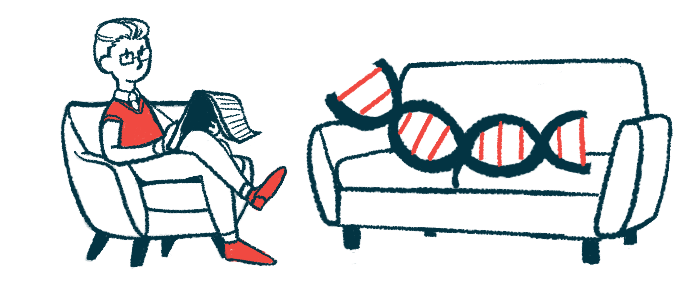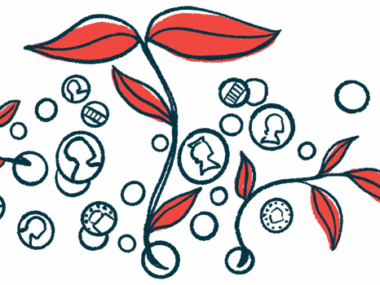Bluebird seeks FDA approval of lovo-cel as sickle cell gene therapy
Treatment targeted for patients 12 and older with history of pain crises
Written by |

Bluebird Bio is seeking approval from the U.S. Food and Drug Administration (FDA) for its gene therapy candidate lovotibeglogene autotemcel — lovo-cel for short — for adults and children, ages 12 and older, with sickle cell disease (SCD).
The company has filed a biologics license application (BLA) to make lovo-cel available for people with SCD who have a history of vaso-occlusive crises (VOCs), or pain episodes that occur as a disease complication.
The filing comes shortly after a request by the FDA for Bluebird to confirm that the way lovo-cel would be made in large quantities for commercial use is the same process that was used for production for clinical testing. This is to make sure that lovo-cel remains safe and effective when used outside of a clinical trial.
Bluebird also included a request for priority review, in which the FDA would consider lovo-cel’s application more quickly than usual. If priority review is granted, the FDA would complete its review in six months instead of the usual 10 months.
“We are pleased to have satisfied the agency’s questions about comparability to enable our BLA submission, and to take this important step toward making lovo-cel available for individuals living with SCD,” Andrew Obenshain, Bluebird’s CEO, said in a company press release.
Sickle cell gene therapy has orphan drug, rare pediatric disease designations
SCD is caused by mutations in HBB, a gene that provides instructions for making a part of hemoglobin — a protein inside red blood cells that carries oxygen to tissues throughout the body. These mutations result in the production of an abnormal version of hemoglobin, called hemoglobin S, which causes red blood cells to take on a sickle-like shape.
The rate at which sickle-shaped red blood cells die is faster than the rate at which the body can replace them, which can lead to a shortage of red blood cells — a condition known as anemia. These cells also are very rigid and can easily block small blood vessels, causing severe pain and damage.
The only cure for SCD is a stem cell transplant, but the procedure comes with many risks. Other treatments are available that can help ease SCD symptoms or prevent some of its complications, but they do not eliminate the disease.
“The severity of sickle cell disease, and its impact on patients and caregivers, has been underappreciated and overlooked for far too long. Transformative therapies for this community are long overdue,” Obenshain said.
Lovo-cel, formerly known as LentiGlobin, is a one-time gene therapy for sickle cell disease that’s designed to deliver a modified copy of the HBB gene into a patient’s own blood stem cells.
When returned to the patient, these stem cells are expected to give rise to red blood cells that are capable of making a functional version of hemoglobin that takes over hemoglobin S. With less hemoglobin S, there should be fewer sickle-shaped red blood cells and less severe symptoms.
The severity of sickle cell disease, and its impact on patients and caregivers, has been underappreciated and overlooked for far too long. Transformative therapies for this community are long overdue.
The BLA was based on data from 36 people with severe SCD, ages 12-50, who received lovo-cel as part of a Phase 1/2 clinical trial. That ongoing trial, HGB-206 (NCT02140554), is evaluating how well the gene therapy may work to reduce the frequency of VOCs. These patients were followed for a median of 32 months, or just longer than 2.5 years.
Additional data came from two patients with 18 months of follow-up each in HGB-210 (NCT04293185), a Phase 3 clinical trial that’s still recruiting participants. Individuals with SCD, ages 2-50, may be eligible for enrollment at a number of locations across the U.S.
Safety data came from 50 patients treated across the entire lovo-cel clinical program, including a half dozen with six or more years of follow-up. Most side effects were due to the disease or treatment with busulfan, a medication that’s used to wipe out a patient’s bone marrow in preparation for a stem cell transplant.
There were some side effects related to lovo-cel treatment. Mild side effects included hot flushes and decreased blood pressure in two individuals, or 4% of patients. Reported serious side effects were anemia in two patients (4%), and leukemia, a type of blood cancer, in another two (4%). Three patients (6%) died during treatment: one due to a sudden heart attack and the other two due to leukemia.
Lovo-cel has previously been granted special designations by the FDA to help speed its development. These include orphan drug and fast track status, and regenerative medicine advanced therapy (RMAT) and rare pediatric disease designations.






